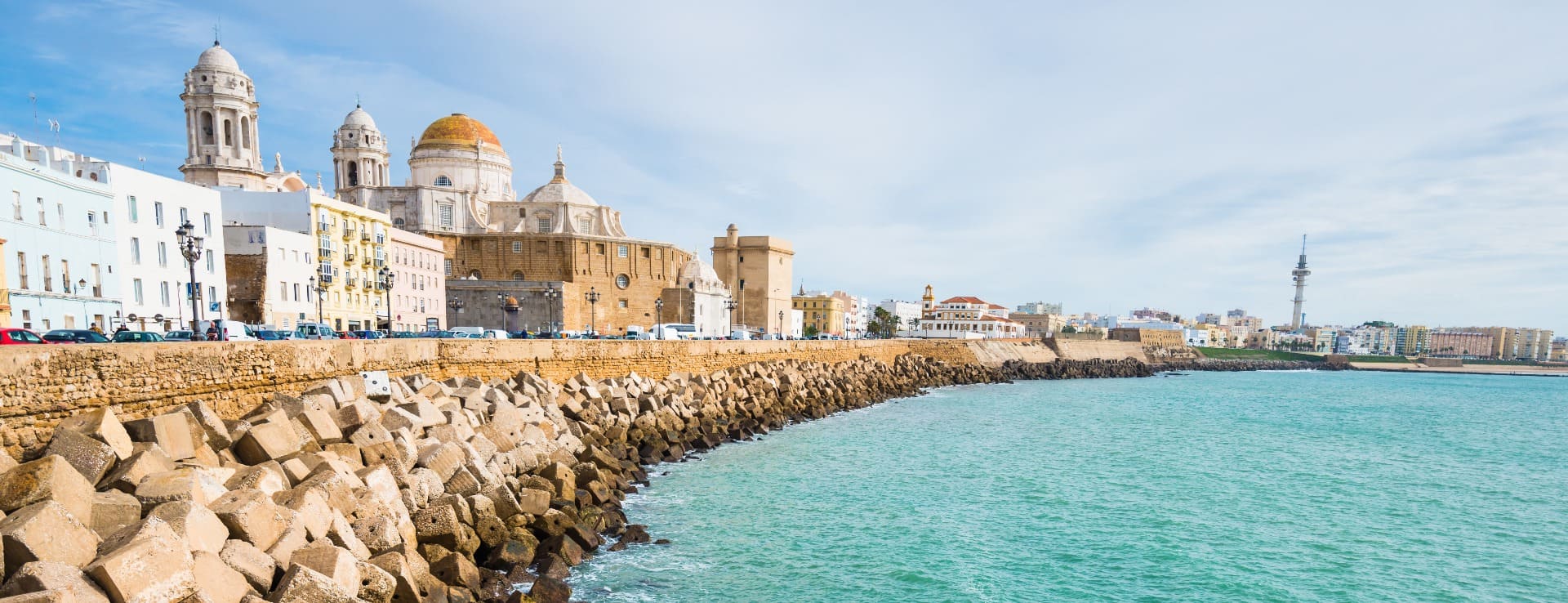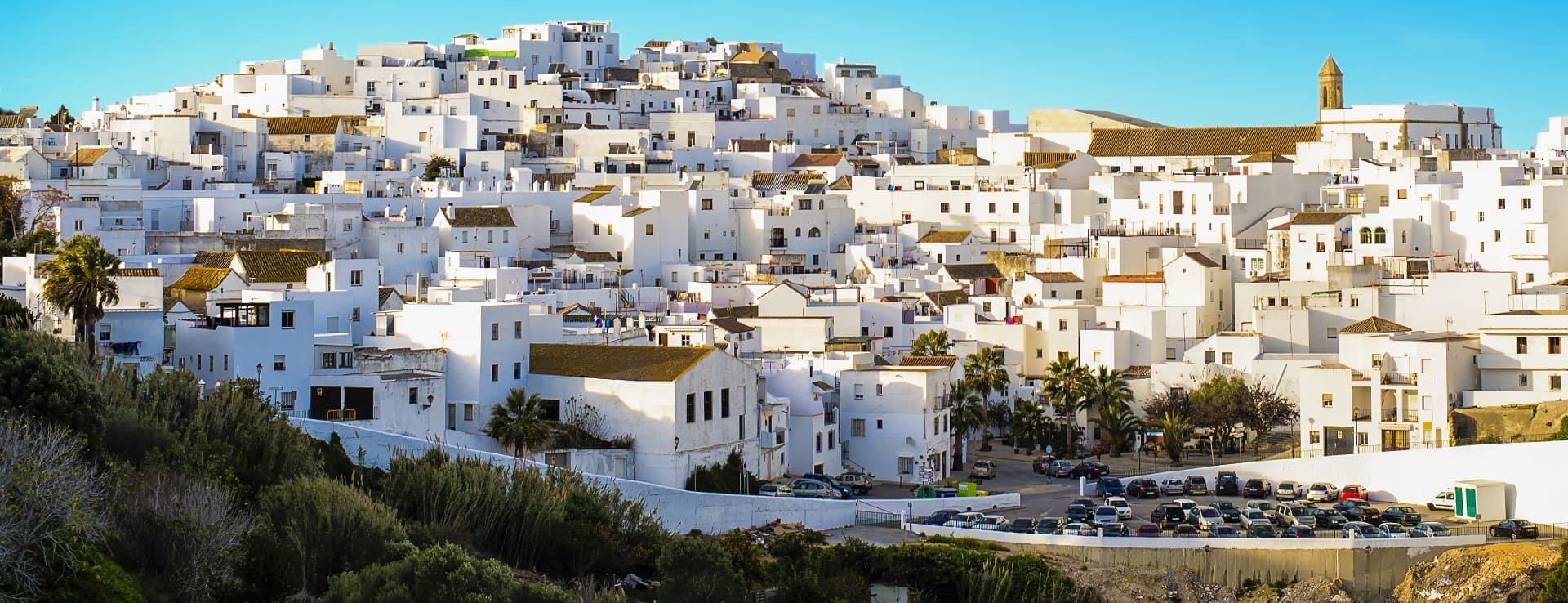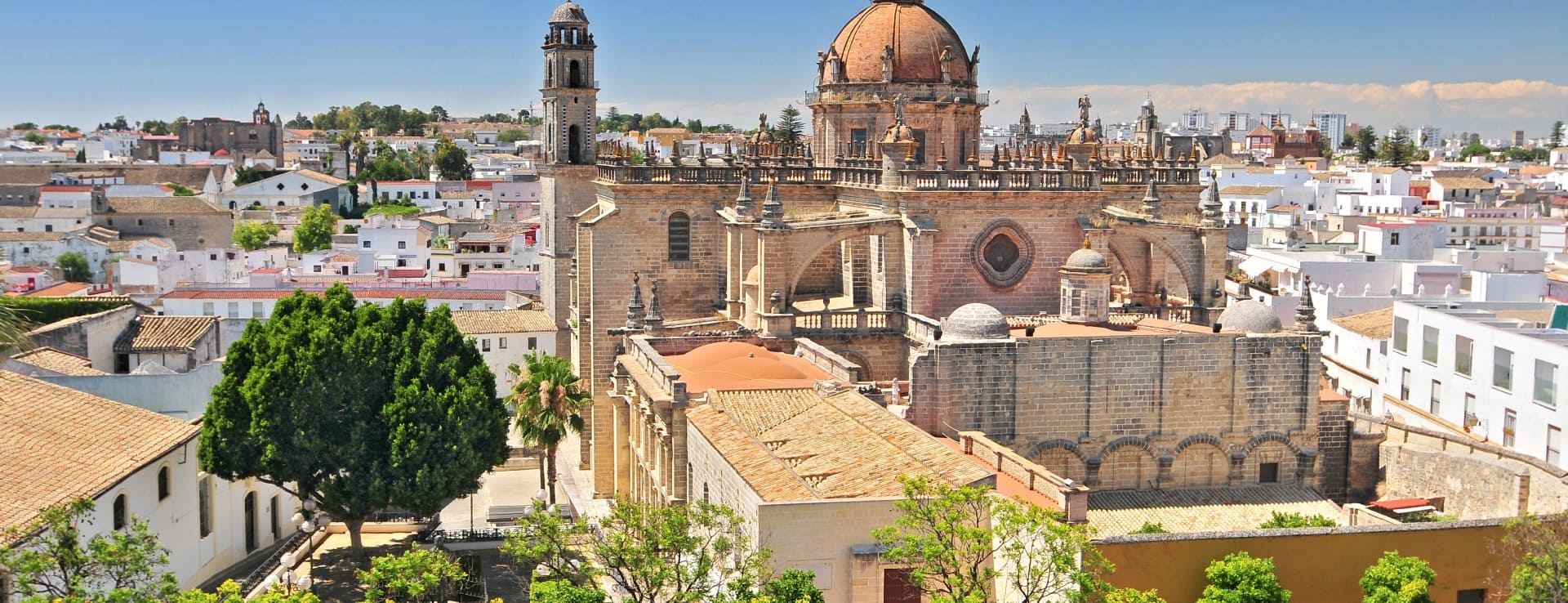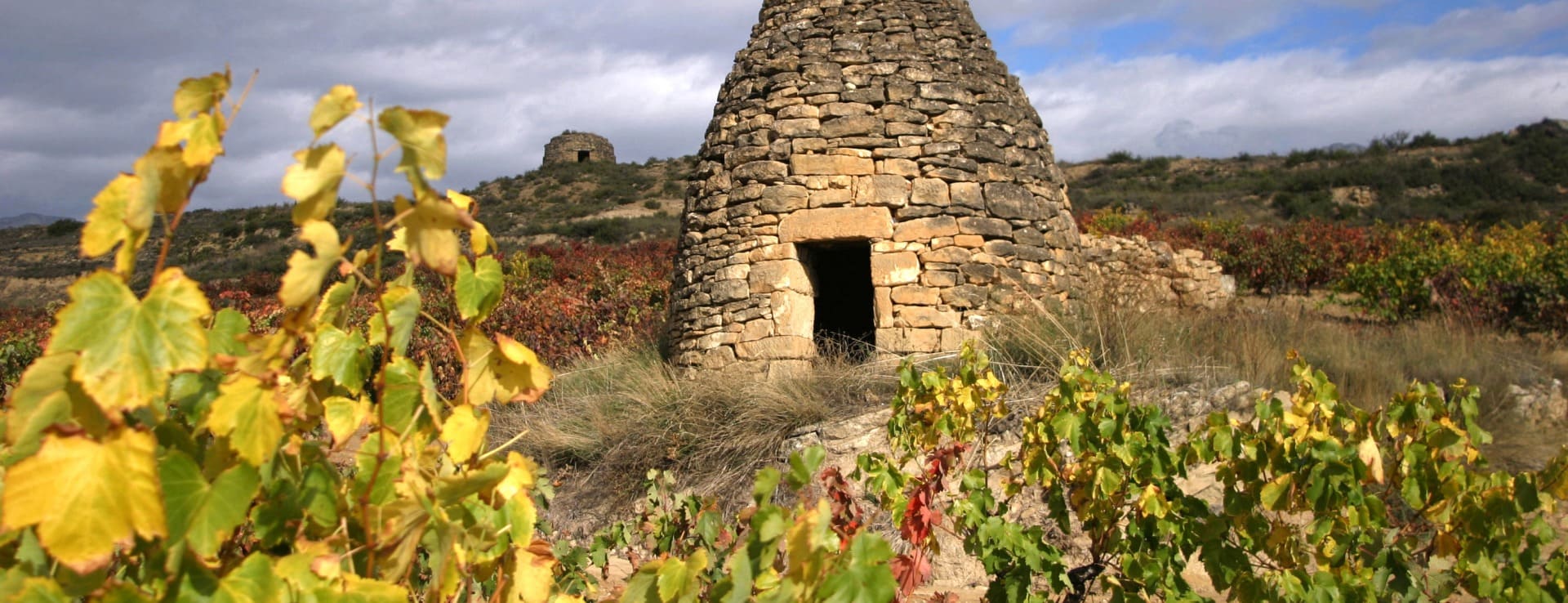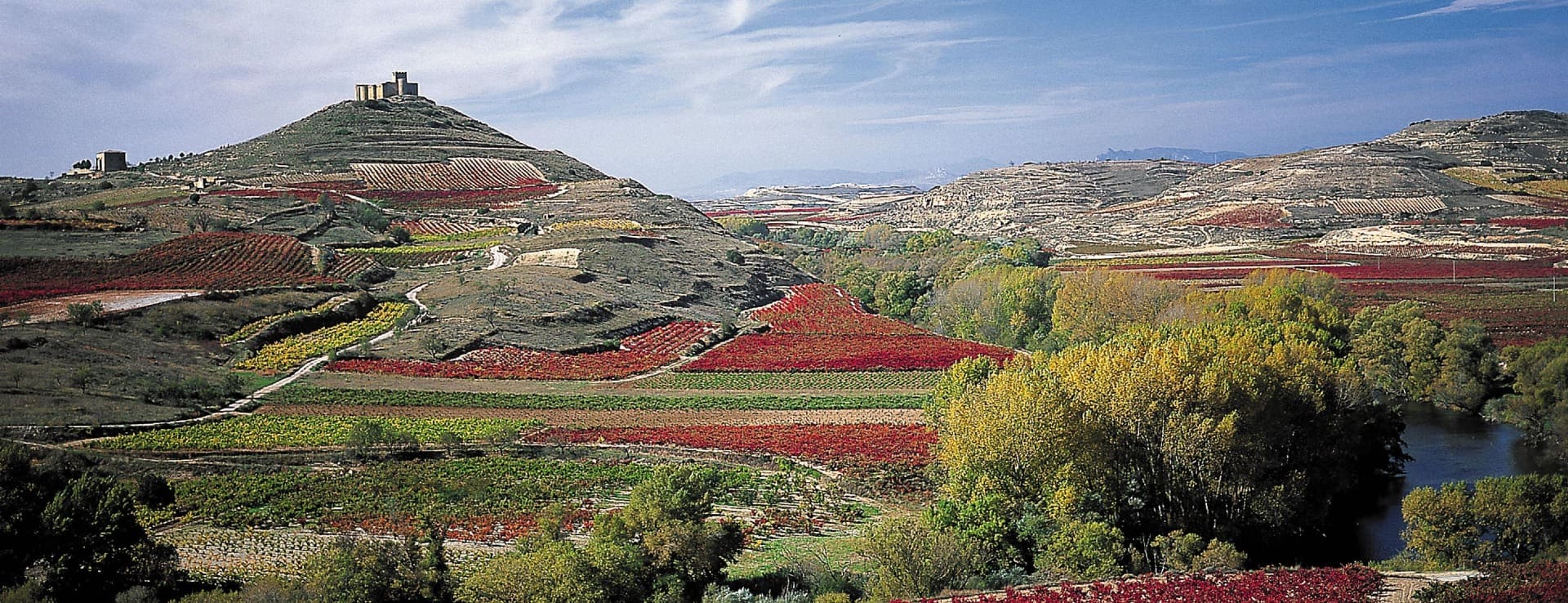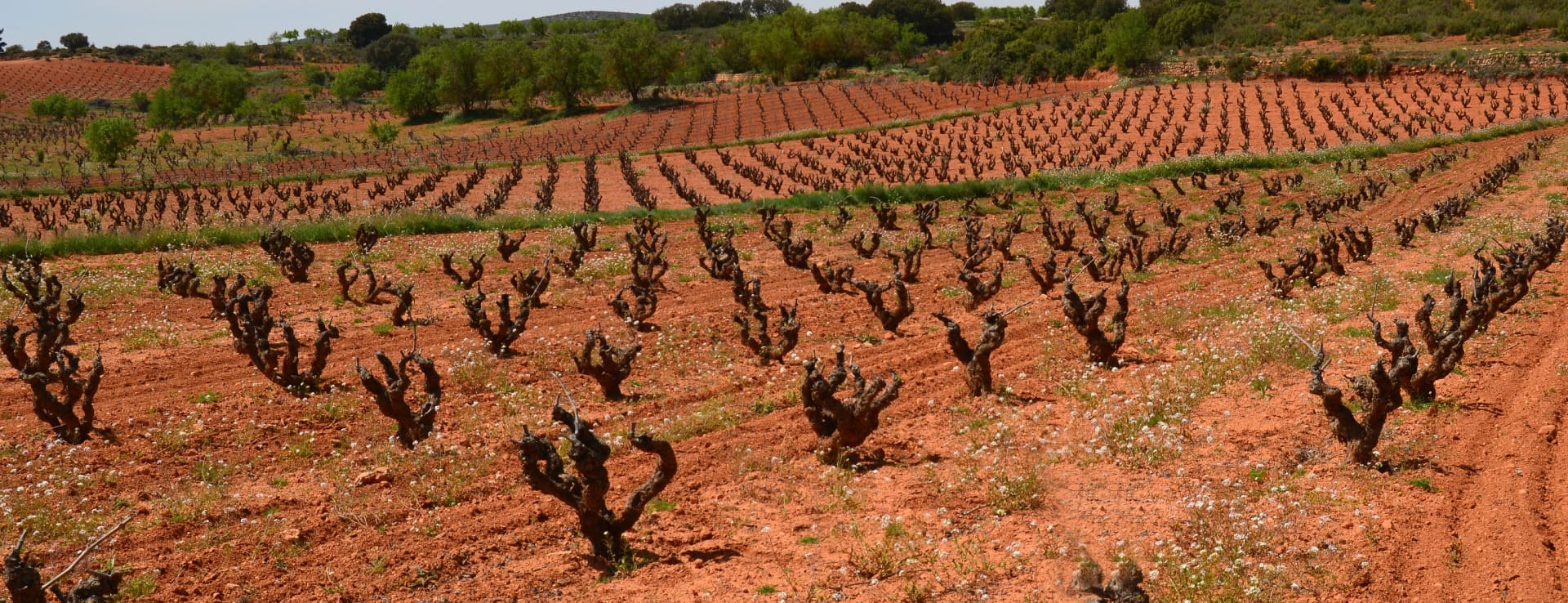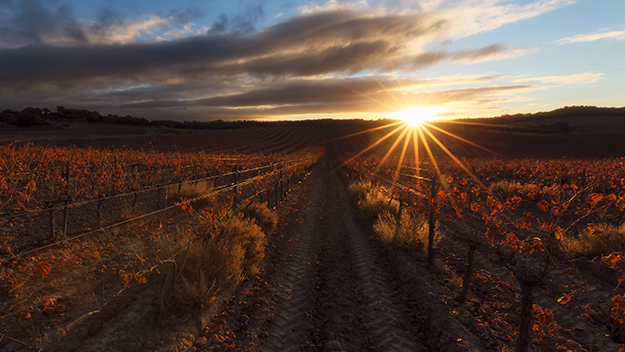Find your winery or vineyard
Infographic of the Denomination of Origin
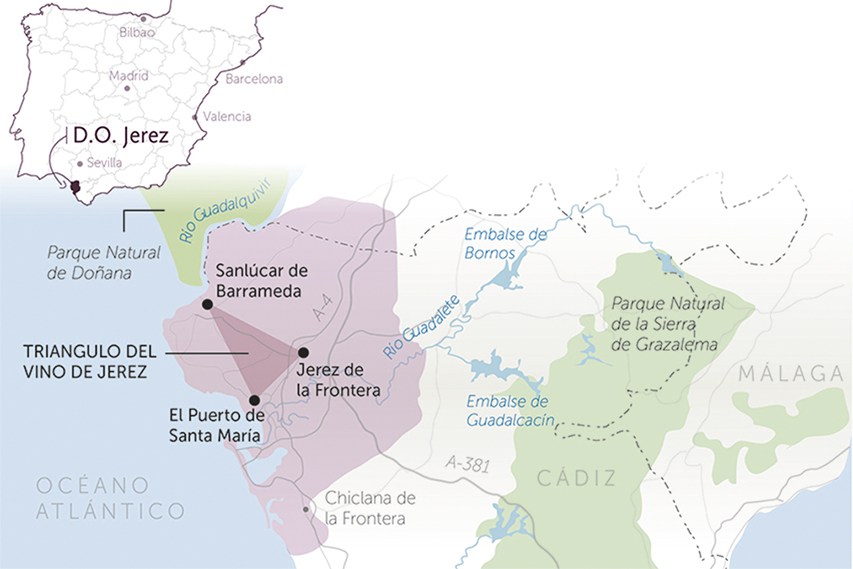
Change to imperial units (ft2, ac, °F)Change to international units (m2, h, °C)
D.O. year of foundation:
1933
Number of wineries (2017):
74
Total surface area:
6.542 ha16.165 ac
Maximum production allowed:
14.285 kg/ha12.744 lb/ac
Altitude of the vineyards:
Min: 20m
Max: 100m
Min: 66ft
Max: 328ft
Temperature:
Min: 0º
Max: 40º
Min: 32°F
Max: 104°F
Yearly hours of sun:
3.100
Yearly rainfall:
620 l/m258 l/ft2
Cádiz
The most southern province in Spain, in the Autonomy of Andalusia, is Cádiz. Situated in the extreme south of the Peninsula, bordering the Strait of Gibralter and British territory. It is divided into 44 districts, each with their own capital, Jerez de la Frontera, Algeciras, San Fernando and El Puerto de Santa María, among others.
HISTORY OF WINE
Las Cumbres and Doña Blanca, two sites very close to the Bay of Cádiz and 4 kilometers from Jerez, are the remains of a city founded by the Phoenicians at almost the same time as Cádiz (Gadir), and both had found winepresses to press grapes. According to the inscriptions found on vases from the time, the Romans continued to send their ´vinusgaditanus´ to Rome. The year 711 would begin the Arabic designation in Spain, and Jerez would continue being the center of raisins and wine production, despite the Koranic ban.
In the 7th century, these wines were commercialized and appreciated in England up until Henry I proposed a bartering system between wool and wine. The discovery of America also opened up new markets for the wines of Jerez. Because it was close to the port of Seville, it formed part of the supply of ships to the colonies. It was such a success that the pirates had their eye on the wines that were produced in the zone and the pillage of Cádiz by Francis Drake´s fleet in 1587 managed to become fashionable in the English court.
At the end of the 18th century, the Solera system was born to satisfy the taste of the Anglo-Saxon markets.
In 1894, the phylloxera came to Jerez and although some wineries went bankrupt, the region recovered quickly. After re-establishing business, another phenomenon was produced, that of imitation, and Sherry wine started to appear around the world (´´Australian Sherry´´, ´´South African Sherry´´). In January 1935, the regulations of the Jerez designation of origin and its Regulatory Board were finally published, the first to become legal in our country. Nowadays, the highest volume of any Spanish export from DO is condensed, selling to more than fifty countries.
WINES AND WINERIES
Sherry and Manzanilla-Sanlúcar of Barrameda are both situated in the province of Cadiz. They are independant Designations of Origin which share the same vineyards and Regulatory Board,established in 1933. They also employ similar methods of wine making based on the Solera system, which consists of a dynamic aging in oak barrels so that young wines assume the characteristics of the older ones. There is also a small quantity of wine subject to a prolonged aging process, which is sold with the designation Rare Old Sherries. This is the case for Amontillado, Oloroso, Palo Cortado and Pedro Ximenez, with an age of over 20 and 30 years.
Some of the wineries which have brought fame to Cádiz are Fundador-Pedro Domecq (1730), Osborne (1772), Garvey (1780), Romate (1781), Sandeman (1790), Estevez Group (1809), Caballero (1830), Maestro Sierra (1830), González-Bypass (1838) or Williams & Humbert (1877).
POINTS OF INTEREST
There is 260 kilometers of coast in Cádiz, as much Atlantic as Mediterranean, beaches with soft sand and a wonderful climate. Almost all of the coast forms part of the Costa de la Luz, apart from San Roque and La Línea de Concepción, which form part of the Costa del Sol. There are also natural places of great value such as the Llanos del Endrinal or the Sierra de Grazalema Natural Park, not to mention that it covers some ground at the Doñana National Park.
In the south of the province there is an important collection of rock art. The passage of different towns throughout its territory, one can find innumerable monuments, churches, museums and archaeological remains. The most important monumental ensemble in the province is the Charterhouse of Jerez de la Frontera. There are also many typical festivities in each town throughout the year such as, the Carnival of Cádiz or the Fair of Jerez, as well as gaditana (native of Cádiz) Holy Week.
D.O./Valle (wine regions)
Discover more wineries and vineyards for sale in these wine regions in Spain
Subscribe to our mailing list to receive news about wineries and vineyards.

